2018 Muncombe Hill formation
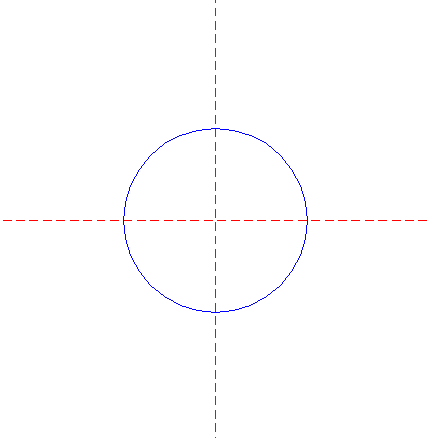
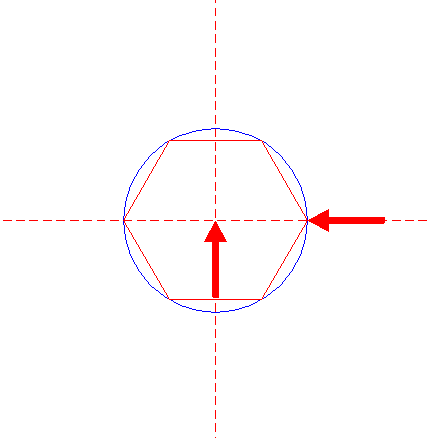
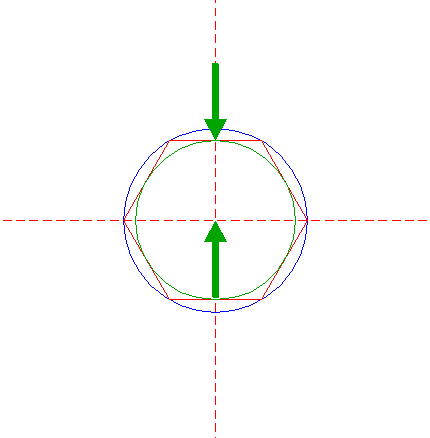
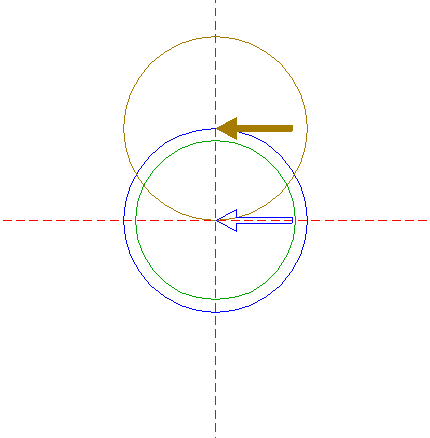
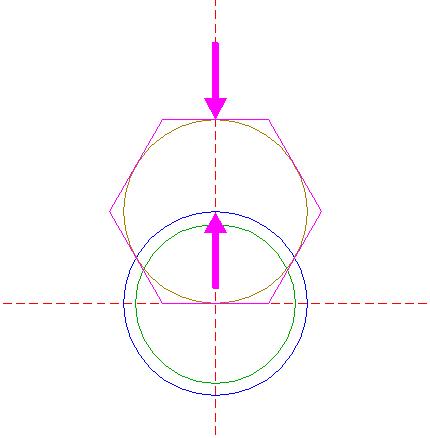
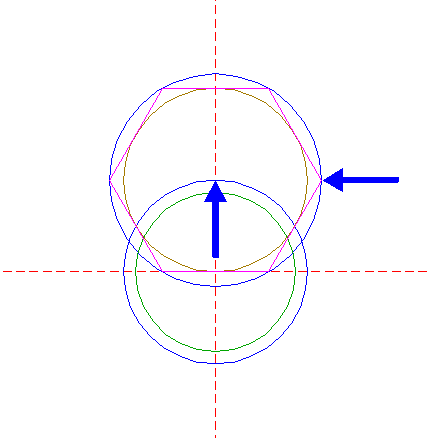
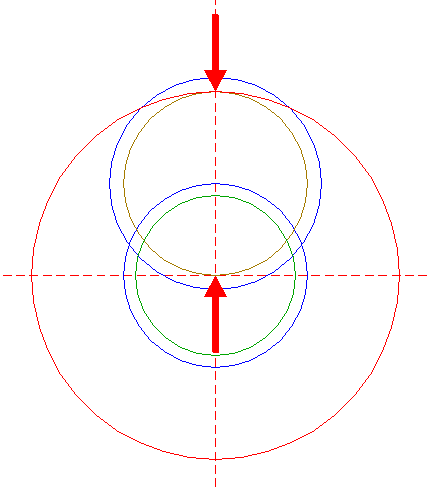
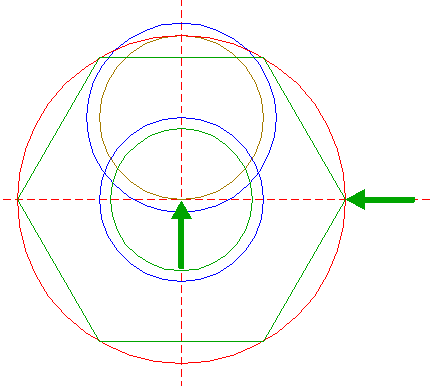
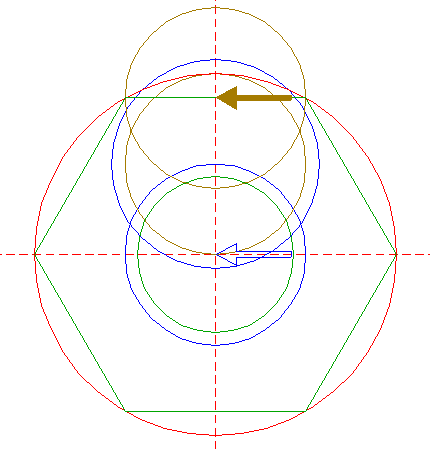
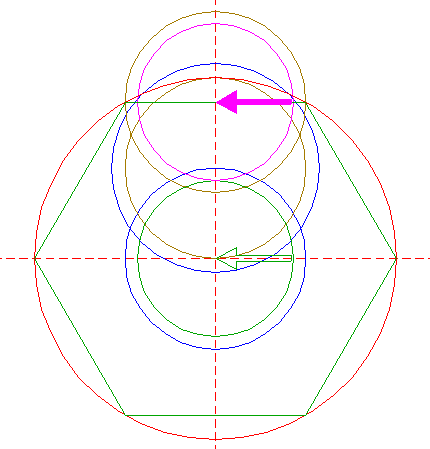
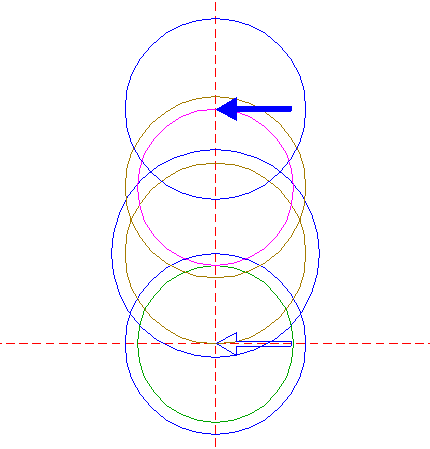
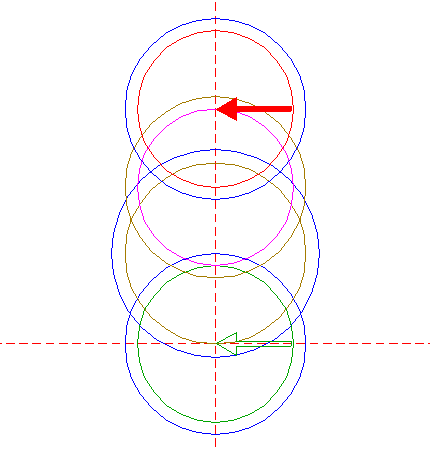
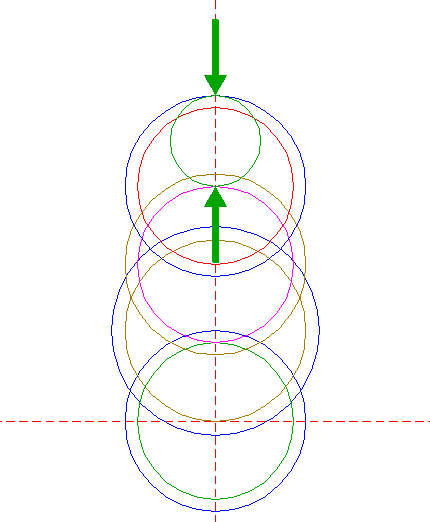
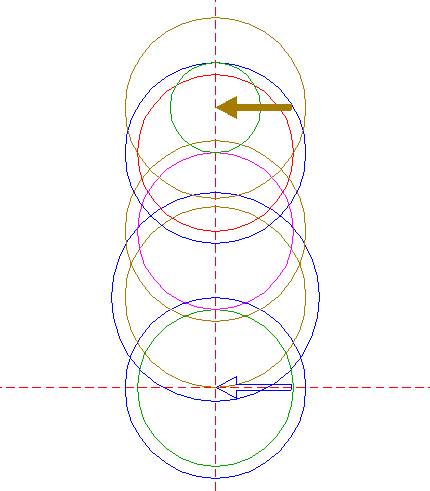
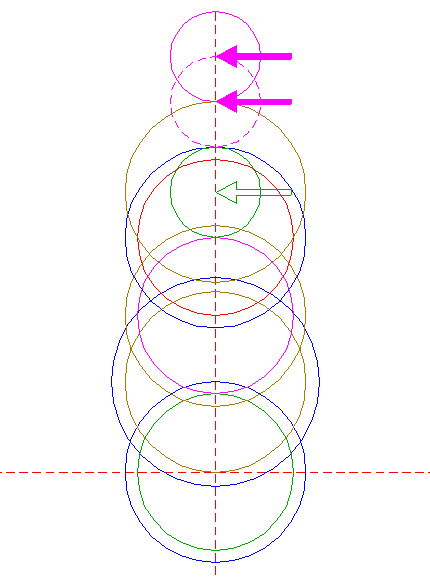
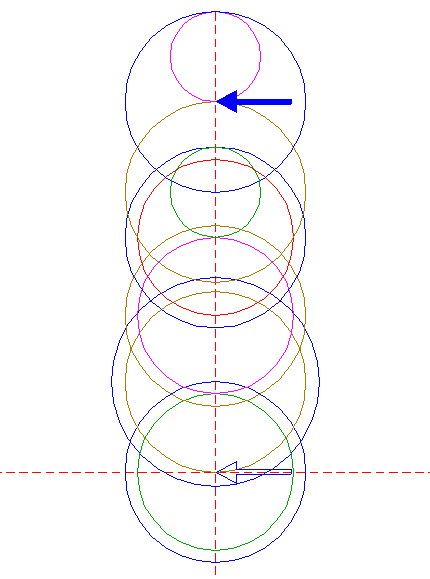
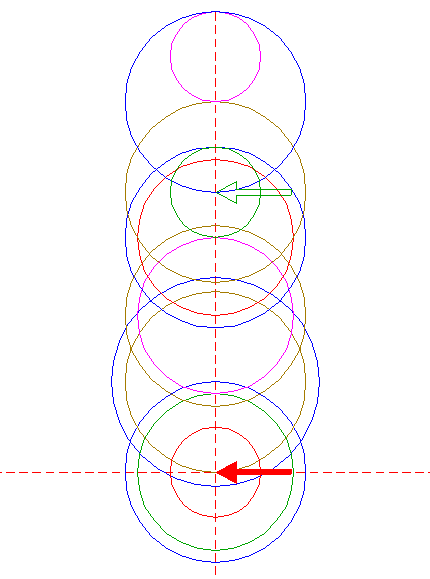
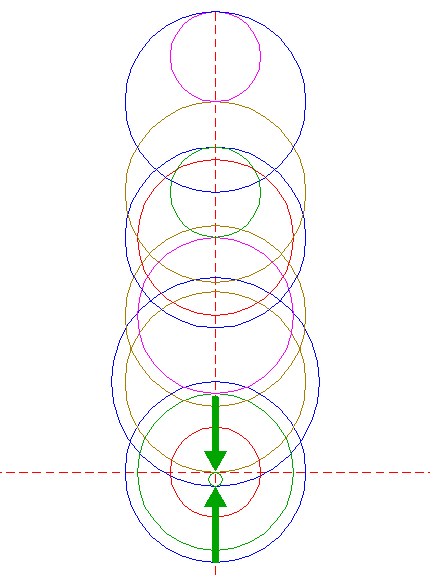
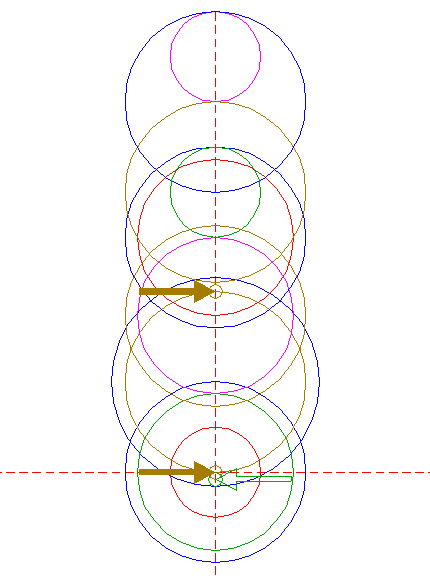
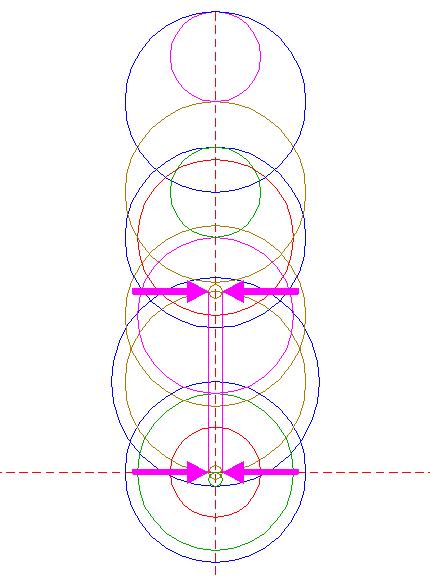
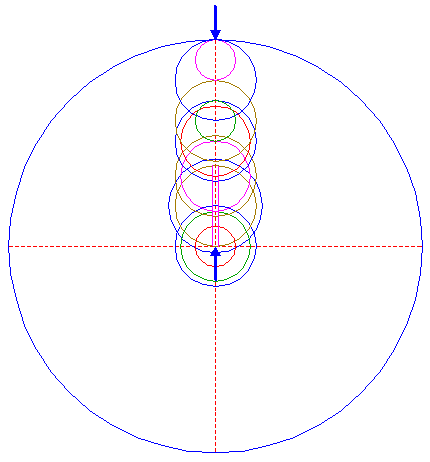
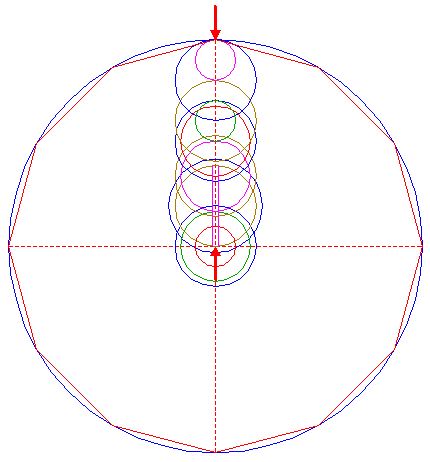
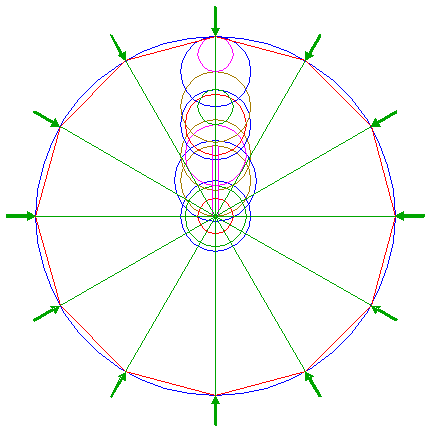
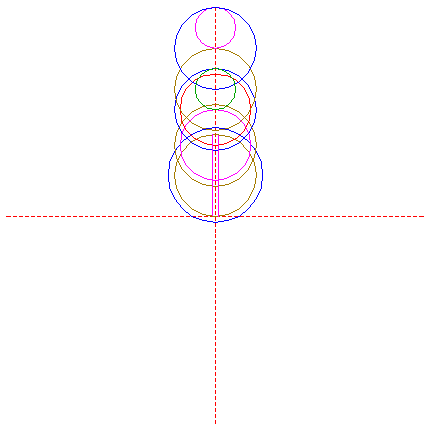
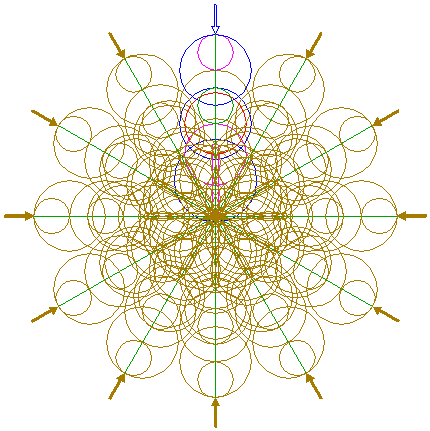
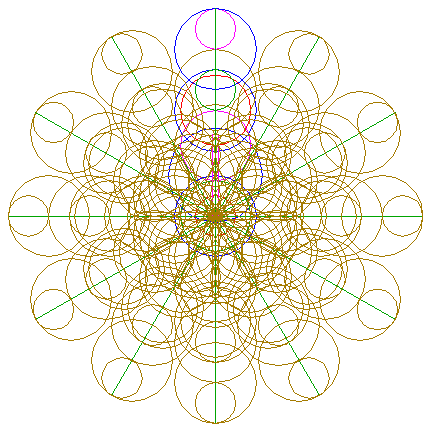
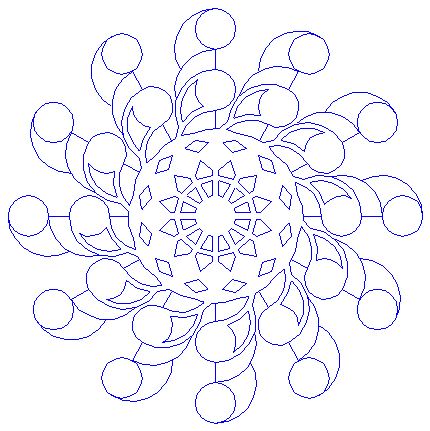
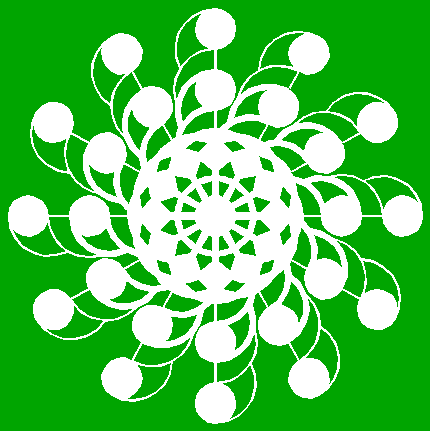
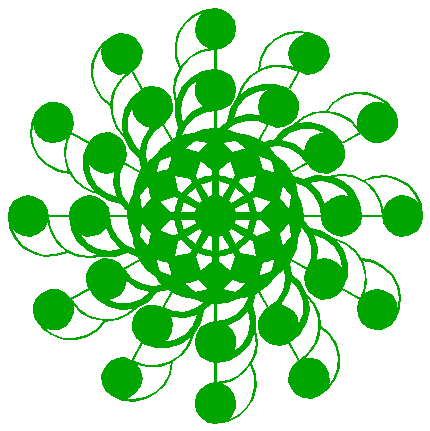
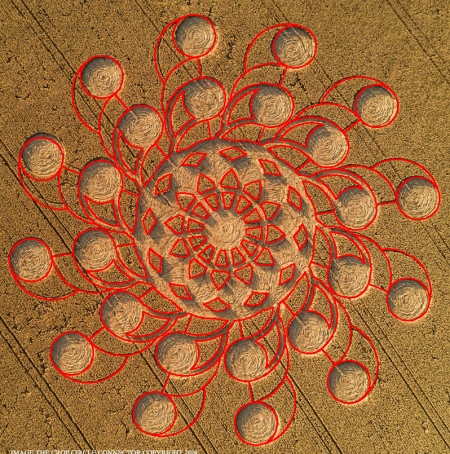
|
Reconstruction of the 2018 Muncombe Hill formation | ||
| 1. | 
| Draw a circle. Draw and extend the horizontal and vertical centerlines. |
| 2. | 
| Construct the inscribed hexagon (regular 6-sided polygon) of circle 1, pointing to the right. |
| 3. | 
| Construct the inscribed circle of hexagon 2. |
| 4. | 
| Copy circle 1 to its upper intersection with the vertical centerline. |
| 5. | 
| Construct the circumscribed hexagon of circle 4, pointing to the right. |
| 6. | 
| Construct the circumscribed circle of hexagon 5. |
| 7. | 
| Construct a circle concentric to circle 1, tangent to circle 4 at the upper side. |
| 8. | 
| Construct the inscribed hexagon of circle 7, pointing to the right. |
| 9. | 
| Copy circle 1 to the intersection of the upper side of hexagon 8 and the vertical centerline. |
| 10. | 
| Copy circle 3 to the center of circle 9. |
| 11. | 
| Copy circle 1 to the upper intersection of circle 10 and the vertical centerline. |
| 12. | 
| Copy circle 3 to the center of circle 11. |
| 13. | 
| Construct the "two-points" circle (defined by the two end-points of a centerline) between the upper intersections of circles 10 and 11 with the vertical centerline. |
| 14. | 
| Copy circle 1 to the center of circle 13. |
| 15. | 
| Copy circle 13 to the upper intersection of circle 14 and the vertical centerline, and move this circle (copy and delete original) to its own corresponding intersection. |
| 16. | 
| Copy circle 1 to the upper intersection of circle 14 and the vertical centerline. |
| 17. | 
| Copy circle 13 to the center of circle 1. |
| 18. | 
| Construct the "two-points" circle between the lower intersections of circles 4 and 6 with the vertical centerline. |
| 19. | 
| Copy circle 18 two times, to the center of circle 1, and to the upper intersection of circle 4 and the vertical centerline. |
| 20. | 
| Construct two parallel lines, tangent to circles 19 at both sides. |
| 21. | 
| Construct a circle concentric to circle 1, tangent to circle 16 at the upper side. |
| 22. | 
| Construct the inscribed dodecagon (regular 12-sided polygon) of circle 21, pointing up. |
| 23. | 
| Draw the twelve rays of circle 21 to the angular points of dodecagon 22. |
| 24. | 
| Copy circles 4, 6, 9, 10, 11, 12, 13, 14, 15, and 16, and lines 20, as a whole, eleven times, to the corresponding positions with respect to the other rays 23. |

| ||
| 25. | 
| Circles 1, 3, 4, 6, 9, 10, 11, 12, 13, 14, 15, 16, and 17, lines 20, and 23, and pattern 24, are used for the final reconstruction. |
| 26. | 
| Remove all parts not visible within the formation itself. |
| 27. | 
| Colour all areas corresponding to standing... |
| 28. | 
| ...or to flattened crop, and finish the reconstruction of the 2018 Muncombe Hill formation. |
| 29. | 
| The final result, matched with the aerial image. |
| Copyright © 2018, Zef Damen, The Netherlands |